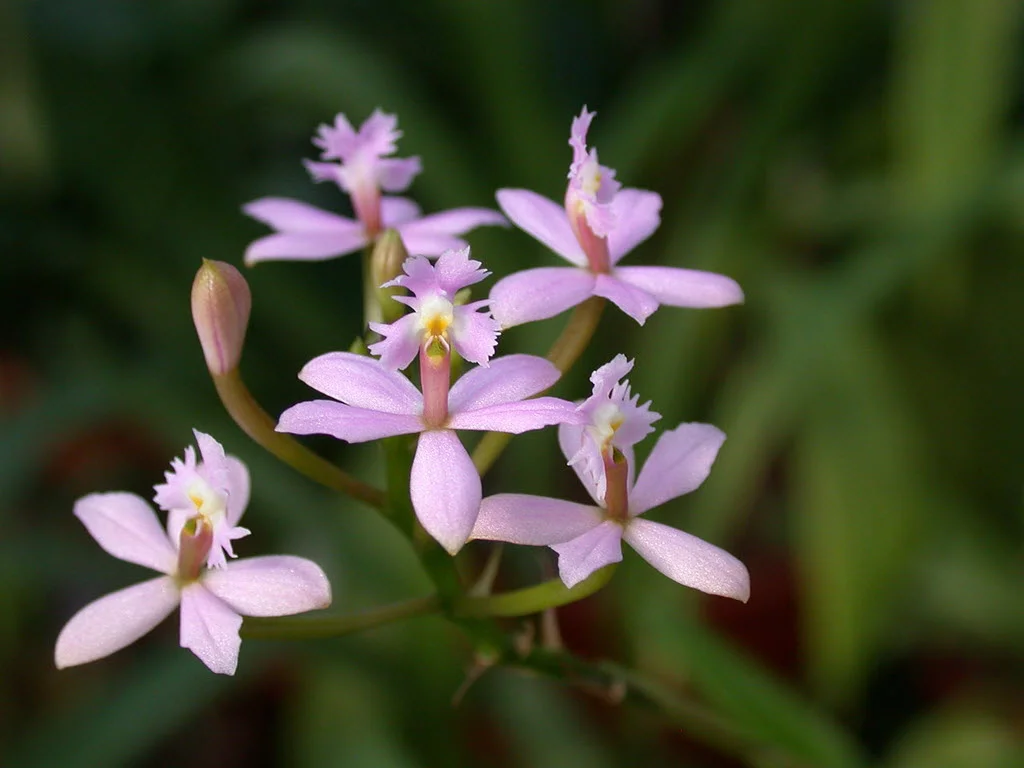Table of Contents
Pronunciation: paff-ee-oh-PED-ih-lum
Other Names: Venus Slipper
Introduction
Paphiopedilums are one of the five orchid genera commonly called Lady Slipper orchids.
Paphiopedilum fowliei
Orchids in this genera are unique because they're split into two groups. One group is called mottled-leaf, and it has leaves with mottling or a marbled effect, while the other is strap-leaf multiflorals and it has leaves that are solid green with several bright flowers.
Temperature
These orchids like slightly higher daytime temperatures that drop down during the nighttime hours. Ideally, you want your daytime temperatures to stay between 65°F and 75°F (18°C and 24°C). They do tolerate slightly higher temperatures to encourage active, rapid growth. However, the higher the temperatures are, the more you have to water them and the higher humidity levels you'll have to maintain.
During the nighttime hours, temperatures can fall slightly without any damage to these orchids. You want to keep your temperatures between 55°F and 60°F (13°C to 16°C). Paphiopedilums won't tolerate much lower temperatures without damage or dying, and if your temperatures are going to get lower at night, cover them or bring them indoors.
Light
Most of these orchids do very well in and prefer lower lighting or at least broken up light to thrive. If you're growing them inside, place them near an east-facing window to ensure they do get brighter morning light but that they're protected from the hotter sun in the afternoon.
If you place them in a west-facing window, ensure that they have enough shade, and the same goes for planting them outdoors. If they get direct sunlight, netting will work to break up the sunlight. The leaves will burn and turn brown if they're getting too much sun, and you should move them to a more shaded area if you notice this happening.
Water and Humidity
Paphiopedilums like water and you want to water them regularly to keep them happy. Don't allow them to dry out. They can't store water so they'll need more frequent watering. The exact amount of water you'll have to give your orchids depends on the potting medium, humidity, and temperature.
A good guideline is to water them every two days until the water runs through the pot. Between watering, you can lightly mist the roots with a spray bottle to ensure that they stay moist. During the cooler months, you can cut watering back to every four days. The humidity levels should stay between 40 and 50%.
Feeding
The spring and summer months will bring an active growth period for these orchids, and you'll want to fertilize once a week. Your fertilizer should be a 30-10-10 mix that you dilute by mixing a tablespoon of fertilizer into a gallon of water.
You should never fertilize these orchids when they're dry as this can cause damage to their root systems. During the winter months, cut back the fertilizer to once a month.
Potting
Paphiopedilums do well in a fine-grade potting mix and you can pot them in plastic or clay pots. The plastic pots will retain more moisture. Mix sphagnum moss, fine-grade fir bark, and potting medium together and lightly place it around your orchids. Don't pack it in as they like loose soil.
Refresh your growing medium every two years or so in the spring months when you first notice new growth starting. You can divide your orchids once every four years or earlier if you notice them crowding each other in the pot.
Video
Here's our favorite orchid care guru Dani, Miss Orchid Girl. She talks about her experiences with these lady slippers, especially potting media and fertilizing.
See More Orchid Culture Sheets











